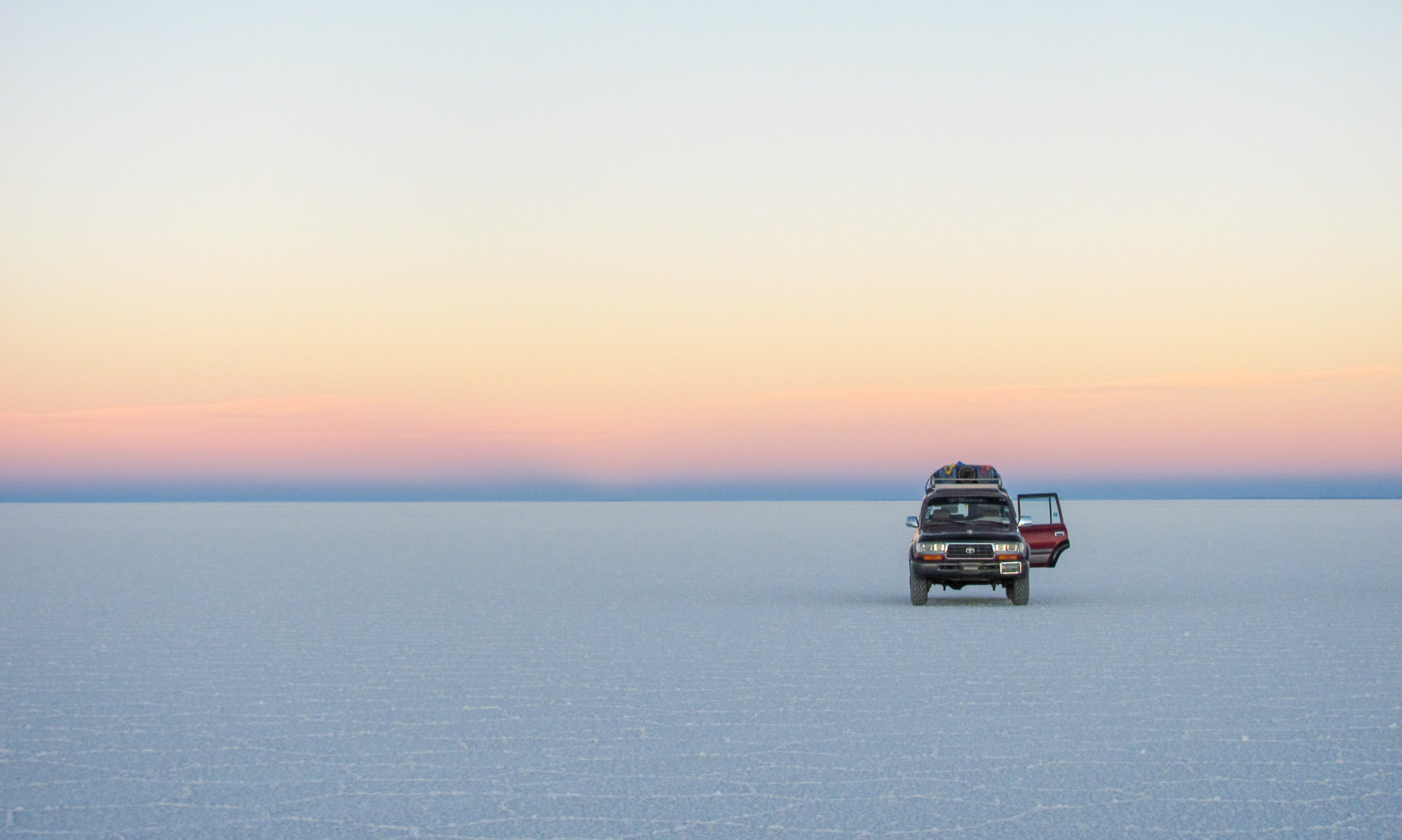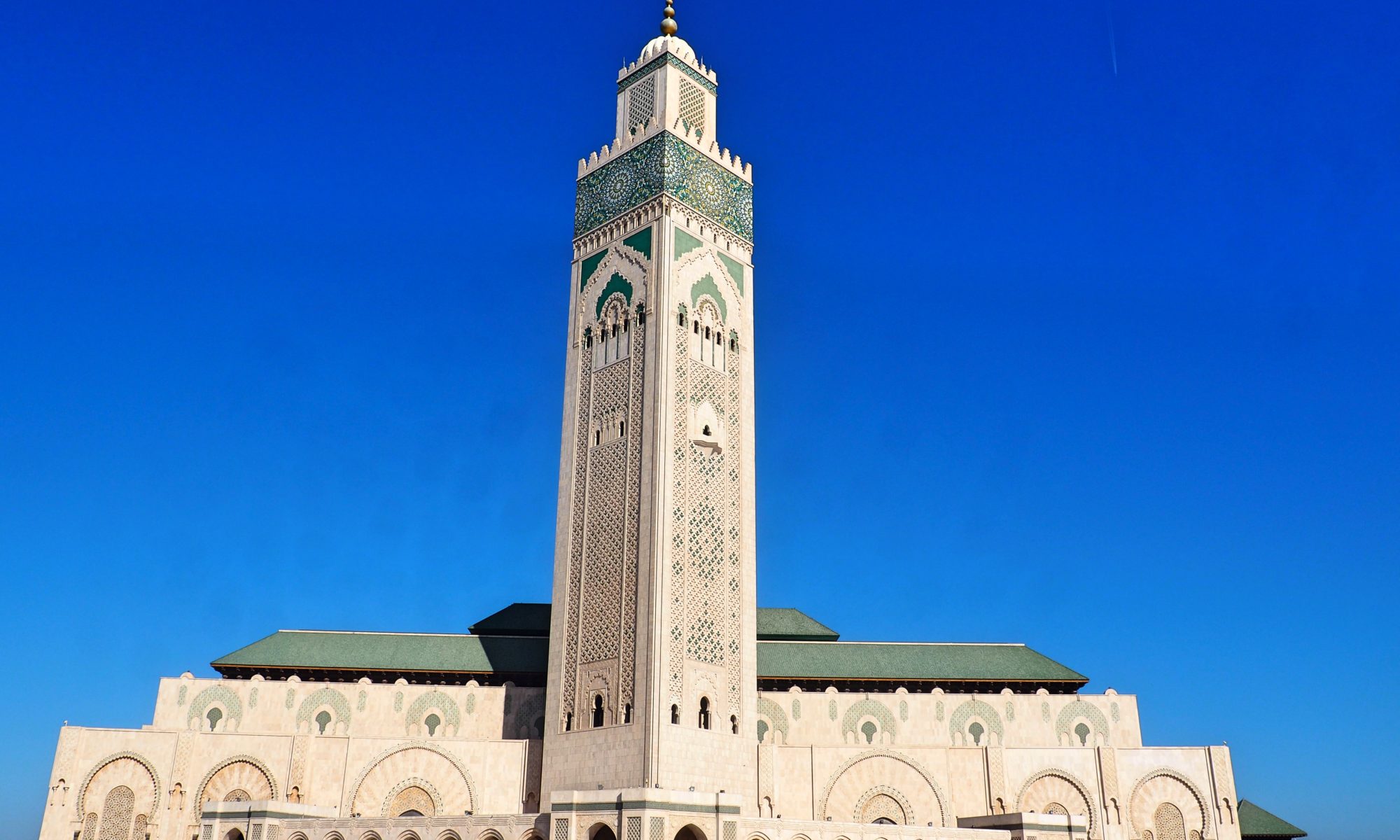Casablanca, Morocco’s biggest city is mainly used as a port into Morocco. A transit-destination that is chosen by travelers because of its large international airport and not much else. To find out if the metropolitan heart of the nation deserves a lengthier stay I decided to spend multiple nights there. I bundled up my experiences into this 24H-itinerary for those that want to see the city, but do not have the luxury to stay there for more than a day.
Casablanca is best known from the 1942 Hollywood blockbuster that bears the same name, however none of this film was actually recorded in the city. Even though it is not Morocco’s capital, Casablanca is Morocco’s metropolitan heart and biggest city by far. It is nothing like the old imperial cities where the pace of life is dictated by the labyrinth of old alleyways that build up the ‘medina’, the heart of town, all lined with beautifully decorated (but helplessly neglected) mosaic buildings. As much as I would like to state that is has its own charm, I was not taken by this city. Casablanca is not an unpleasant city but it certainly is not a place where you want to be hanging out for too long.
The huge (and beautiful) Hassan II mosque however warrants your visit to Casablanca, by being not only the third biggest mosque in the world, but the only one in the country that can actually be visited by non-Muslims. This article will help you with making not only the visit to the mosque but also the rest of your stay in Casablanca worth its time.
– Practical Information –
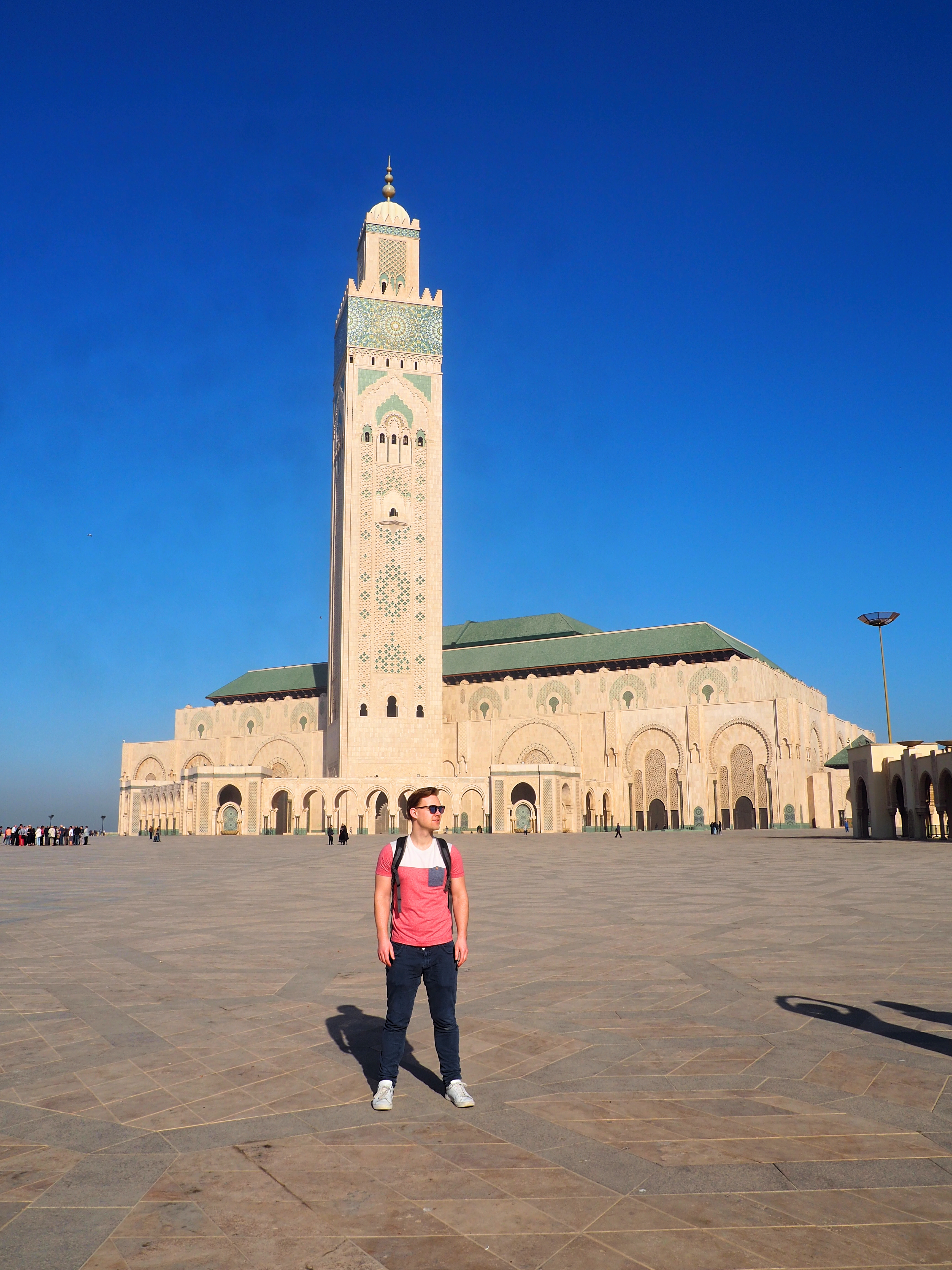
When Because its a coastal city, Casablanca receives mild temperatures with little rain throughout the year. The hottest months are June – August (daily highs around 30 degrees Celsius) and the coldest December – March (daily highs around 19 degrees) Celcius). Casablanca can be visited throughout the year but because mainland Morocco gets extremely hot in summer it is best to avoid these hot months and travel in Spring or Fall if you plan on visiting more than just the city.
In & Out The city can be visited by plane or – if already in Morocco – by bus or train.
Air: Morocco’s main international airport is Casablanca’s Mohammed V airport, located 30 km south of the city. The airport has direct flights to most major destinations world-wide and to all bigger Moroccan cities as well.
Getting from the airport to the city is easiest by train. Upon arrival, just follow the signs that say ‘Gare’ (French for train-station) that take you to the ground floor where the train leaves every hour between 6AM and 10PM. It takes a little over 30 minutes and costs 42MAD (to Casa Voyageurs, Casablanca’s main railway station from which you can take a ‘petit taxi’ , the tram or bus to your ho(s)tel).
If your more well-endowed you can opt for a ‘grand taxi’, an old Mercedes that takes you directly to your end-destination for around 300MAD (more after dark).
Lastly the cheapest option is taking the bus which only costs 20 MAD. It leaves outside the terminal and has many stops. If during the day, this is a fine option but after dark it might be a little hard to find out where it leaves exactly and when to get off – I advice to take the train.
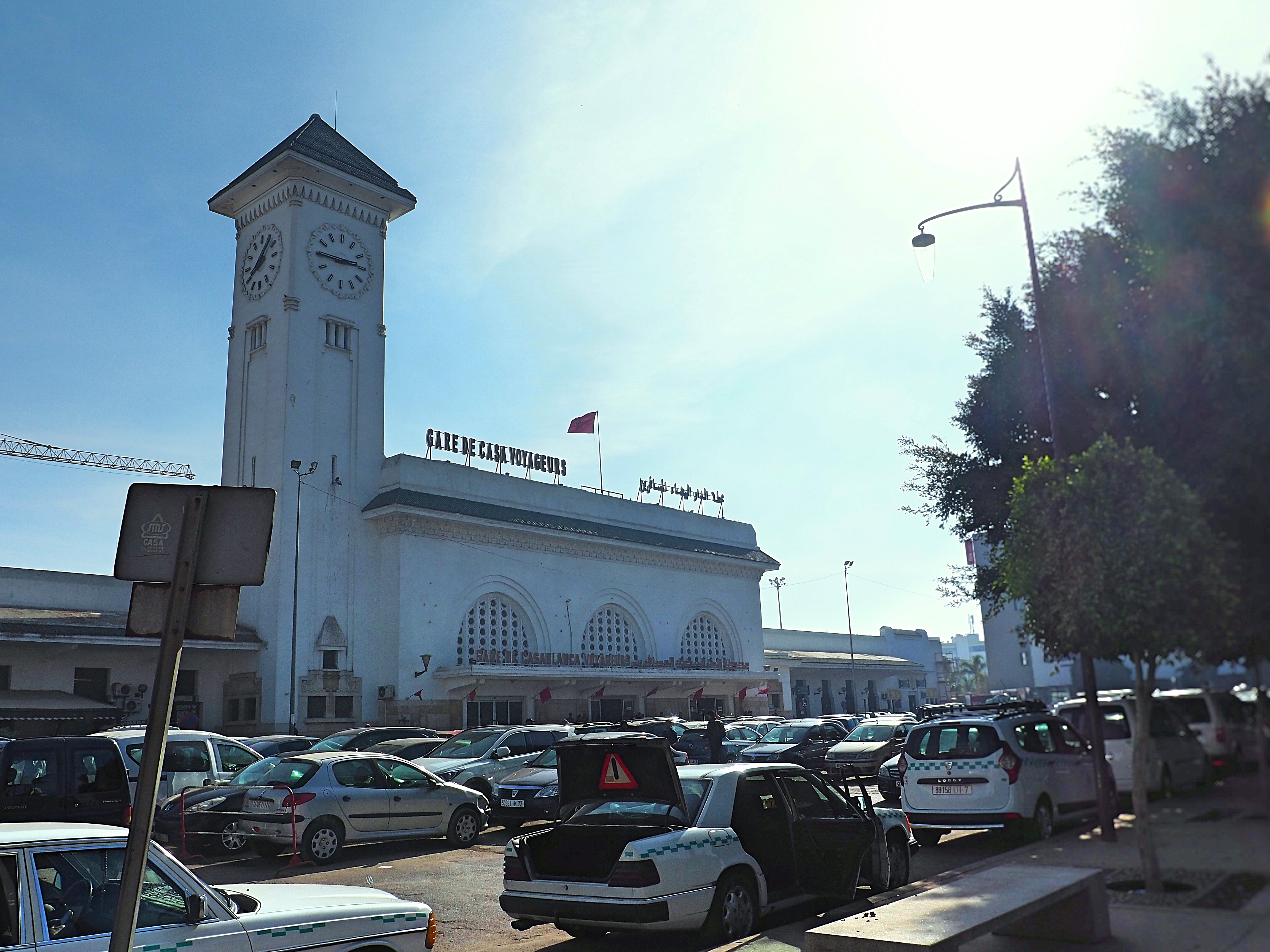
Train: Casablanca has several railway-stations but its main ports for traveling to other cities are Casa Port, located in the cities harbor that caters Rabat and Kenitra and Casa Voyageurs, that caters all destinations (including Rabat and Kenitra – the train to Fez stops at both places). From Casa Voyageurs to Marrakech is about 3 hours (100 MAD for 2nd class), to Fez around 4 (116 MAD). Rabat (37MAD) can be reached in a little more than one hour. Plan your trip by checking the up-to-date-schedule here. Take into account that – although reasonably reliable and save – Moroccan trains are not punctual. Out of the four trains that I took, two left at least 30 minutes late. Do not bother to book first class, seats are more expensive but only slightly more comfortable.
Bus: There are bus-lines to all major cities from the CTM bus station. Consider however that the roads through the Atlas Mountains are bumpy and filled with hairpin-turns. For around the same price of a train-ticket you’re getting a slower and less comfortable ride – so I recommend only choosing this option if you have a very specific destination.
Getting Around: Casablanca has a brand-new tramway that connects all major points in the city. It is clean and easy but its schedule might be a little hard to figure out so its easiest to just show up and see at the stop when it leaves as it runs quite regularly throughout the day.
The easiest way to get around the city is by ‘petit taxi’, the small red taxi’s that you’ll see across the city everywhere you look. Most drivers will try to charge you a fixed fee but just insist on running the meter (even if you get rejected a few times or if they claim the meter is broken or only runs during the day) as this will always turn out cheaper. If taxi-drivers are unwilling to run on the meter at popular stops, just flag one down at the nearest street (especially the taxi-drivers at Casa Voyageurs will come up with creative excuses on why they can’t run the meter). A trip from the railway station to downtown should cost anywhere between 10 and 15 MAD, and a little more after dark.
Budget: While I consider Morocco a budget-destination, Casablanca is the priciest city in the country. Mid-range hotels start at 600 MAD a night and do not even think about drinking alcoholic beverages unless you’re willing to be 150 MAD a beer. Alcohol is hard to get by in Morocco in general as 99% of its population is Muslim, but where in Fez or Marrakech there are always a few hole-in-the-wall’s that serve a beer or glass of wine for 40 MAD, in Casablanca I could not find any.
– 24 H Itinerary –
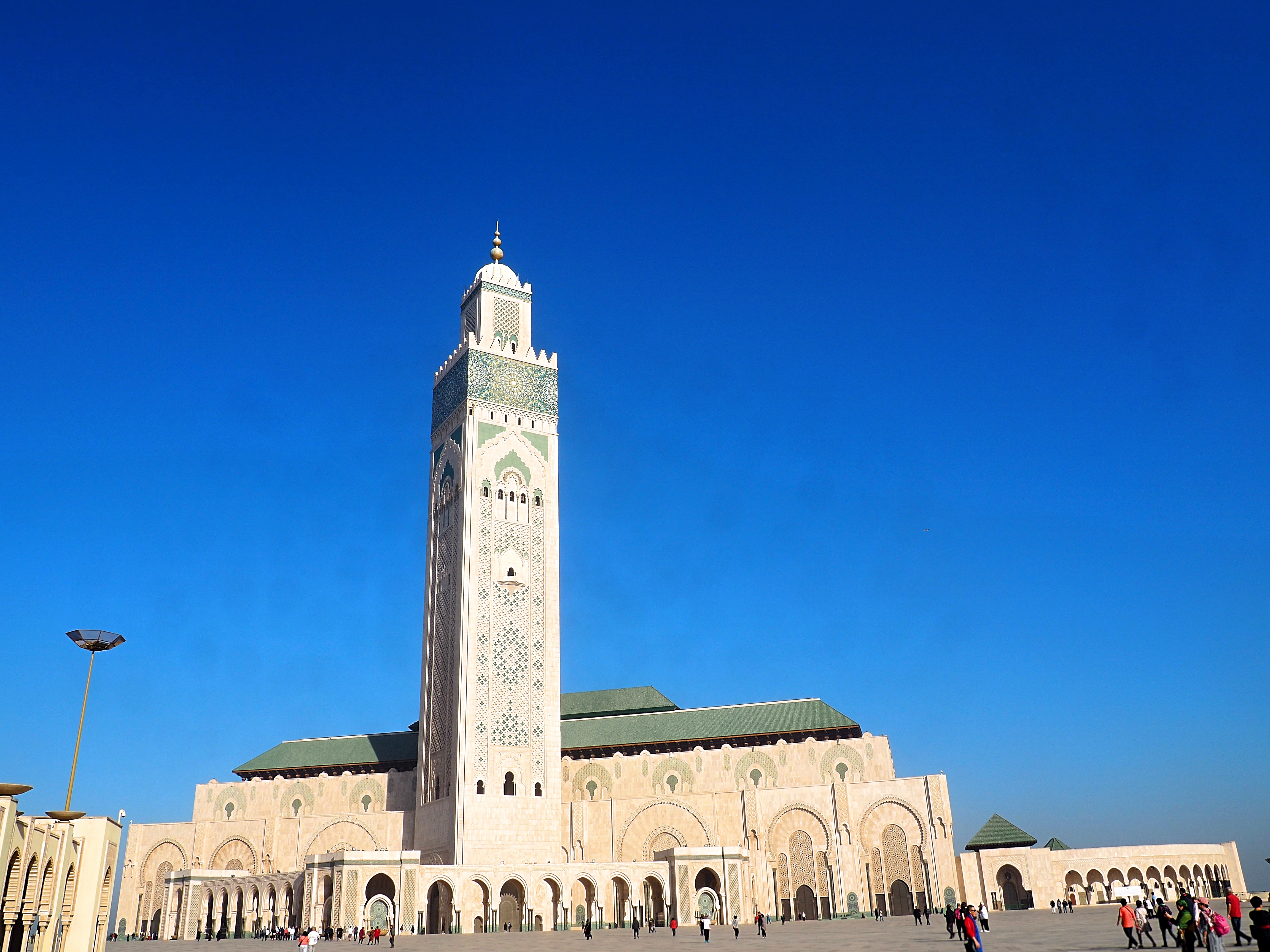

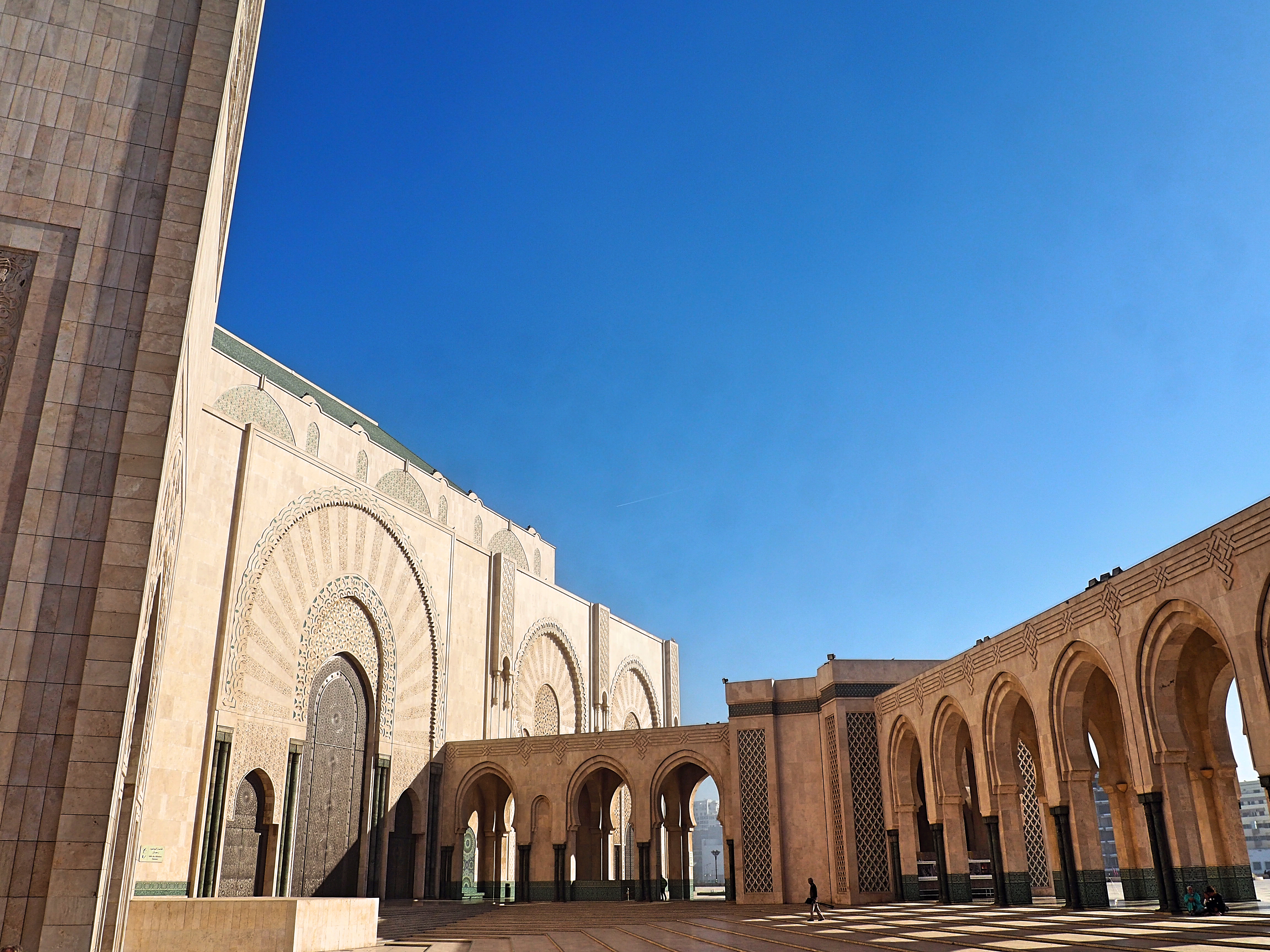
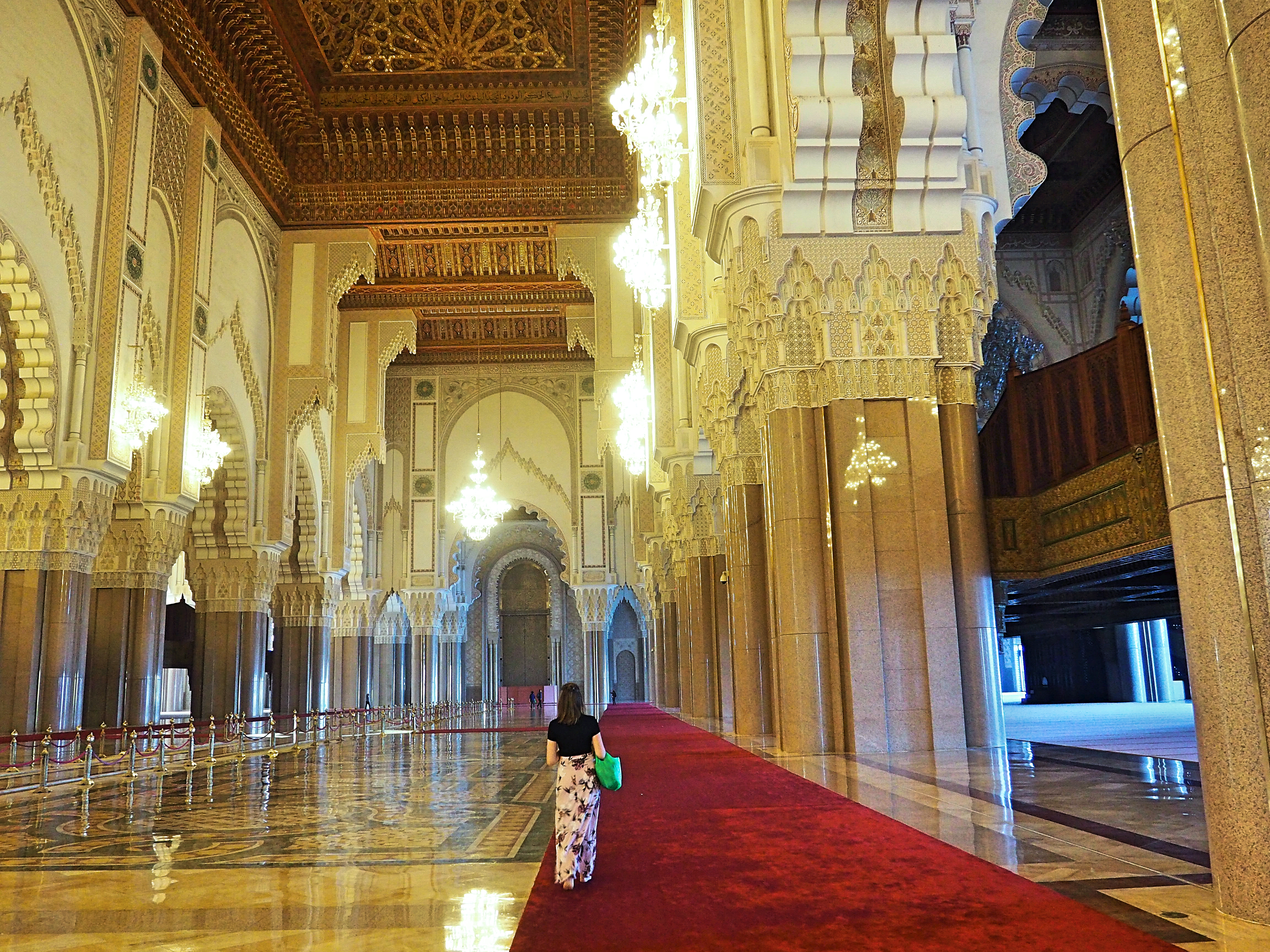
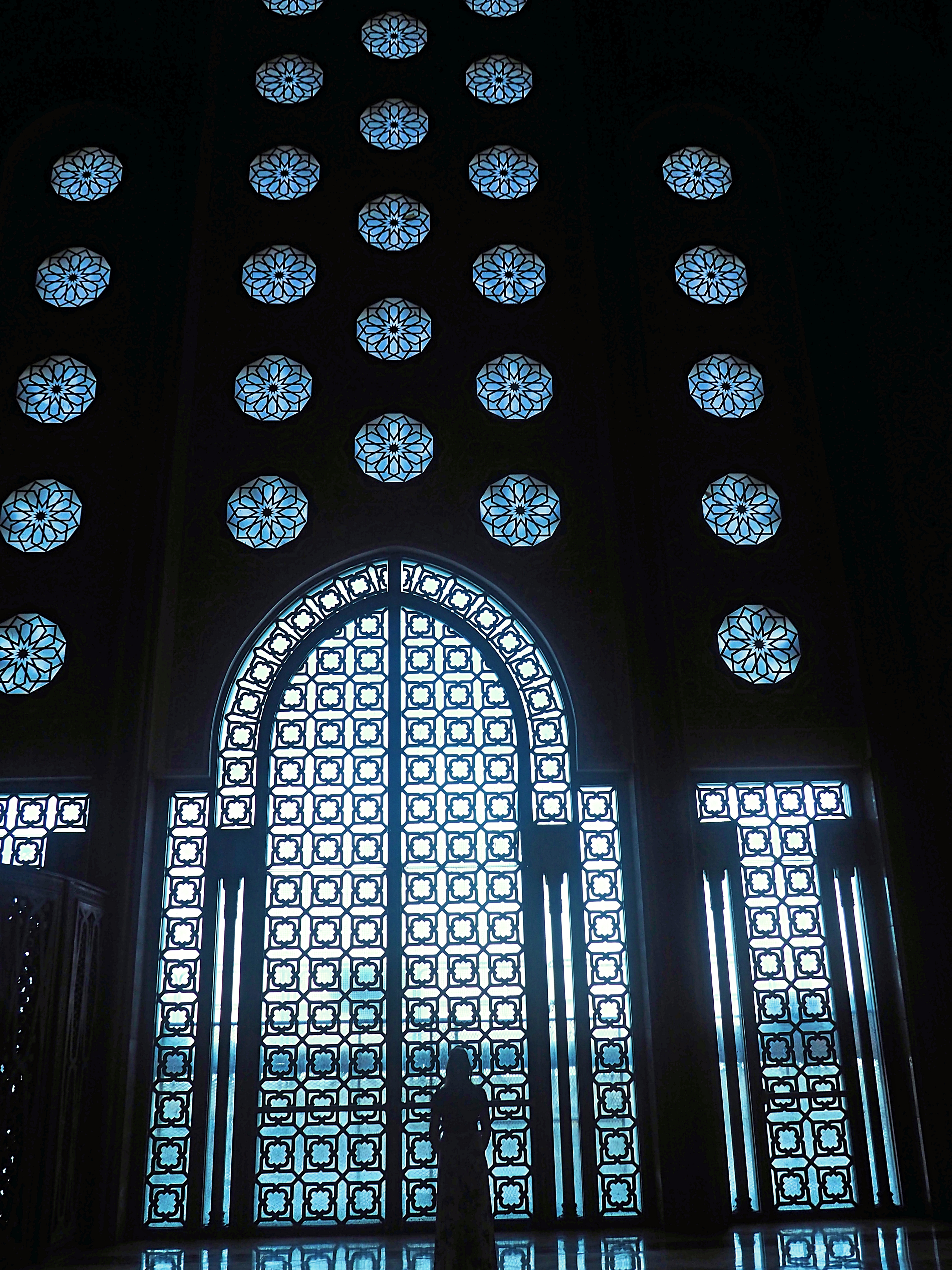
After breakfast in your ho(s)tel, it is best to start off with a visit to the Hassan II Mosque right away. Take a ‘petit taxi’ to the mosque (the driver will know where you need to be dropped off). The mosque can only be visited by taking a guided tour that are provided in a whole range of languages (English, French, Arabic, Italian, German and Spanish to name a few). However if not enough people for a certain language, that language-group gets cancelled and the people divided up over the other languages in accordance with personal preference. The tours leave at 09.00, 10.00, 11.00 but not at 12.00 or 01.00, as the mosque is then closed down for prayers. If you are unable to make it on these times there are 2 more moments in the afternoon.
After the tour, take a ‘petit taxi’ to downtown Casablanca to ‘Place Mohammed V’ and walk around this part of town to see the Mauresque (Moorish) architecture. Walk up Ave Hassan II in the direction of ‘Place Nation Unies’ and after crossing the big street ‘Boulevard de Paris’ walk north-east (take the diagonal street called ‘Rue Driss Lahrizi’) to see the best preserved buildings in the area. Walk to ‘Rick’s Cafe’ to see the iconic cafe and if you want, sit down for lunch. I found the place rather overpriced and it lacks a good outdoor-space so you might be well off by just snapping the obligatory picture and move on. A better option is the nearby ‘Casa Fish‘ at Pl Ahmed Bidaoui which serves good seafood lunches on a charismatic little roof-top terrace. Casa Fish is located right next to Hotel Centrál (probably the best budget accommodation in town).
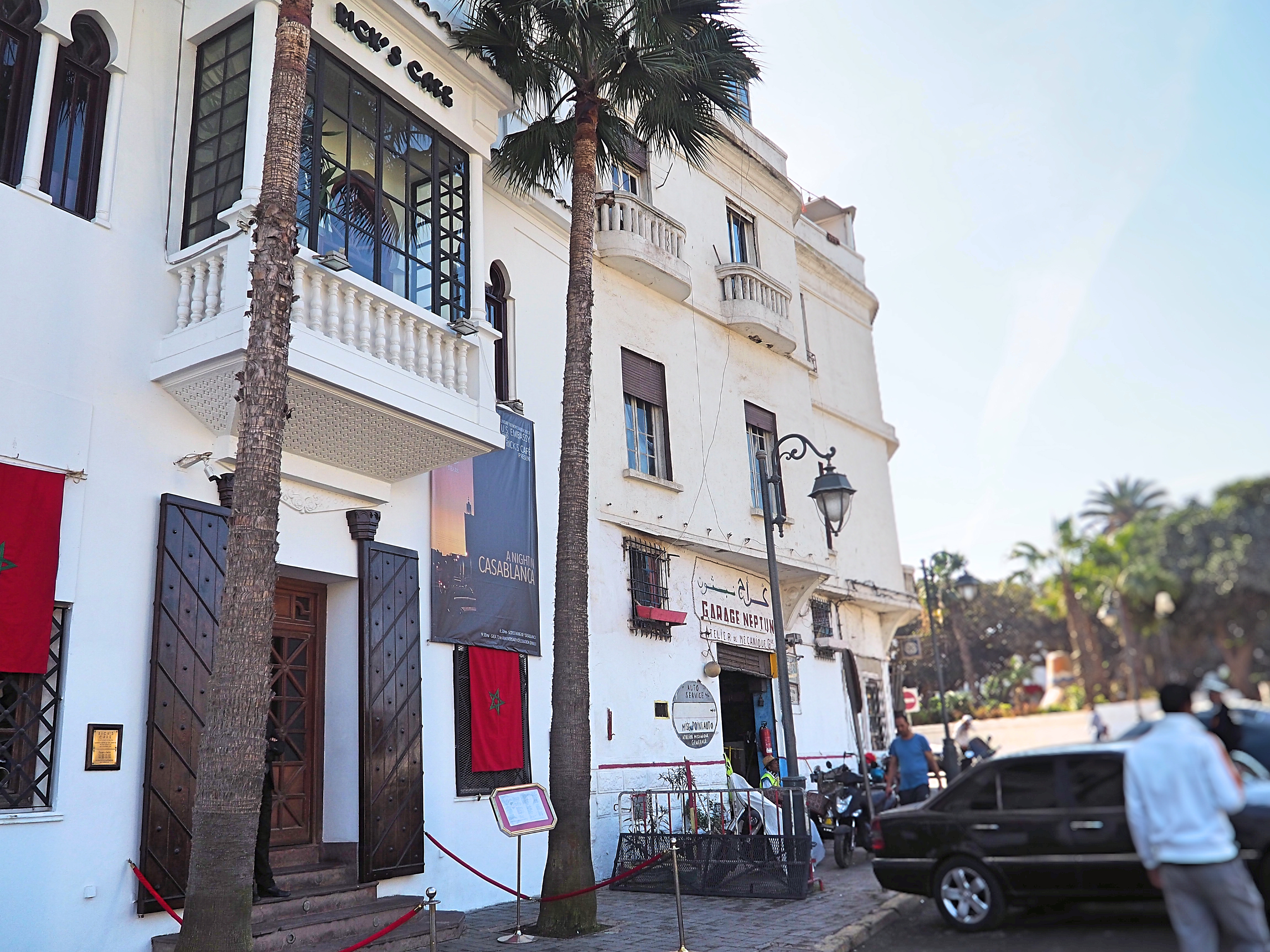
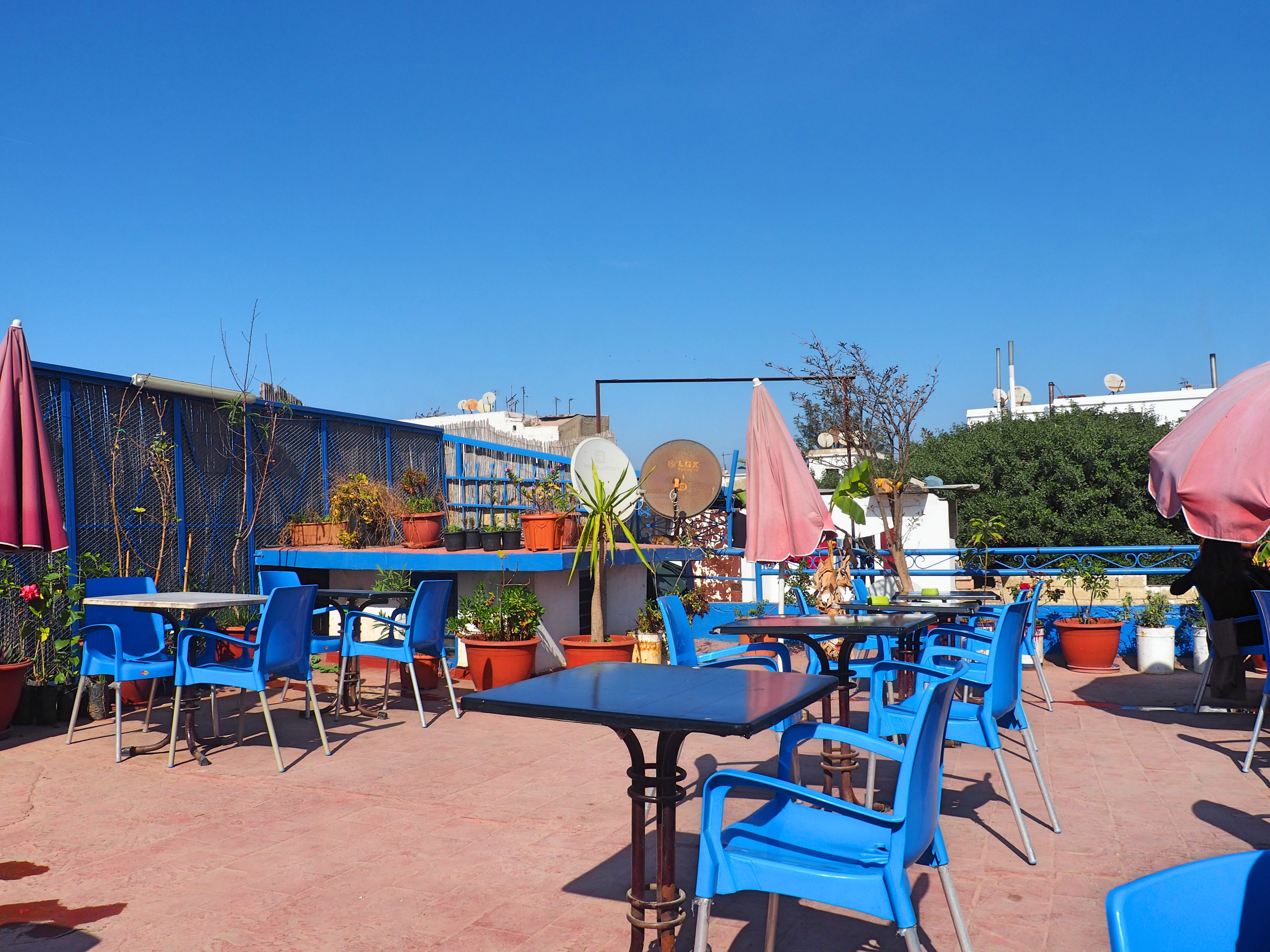
After walking around take the tramway (or a petit taxi) at either ‘Marché Central’ or ‘Place des Nations Unies’ to ‘Ain Diab’ where you can spend the rest of the day soaking up the sun at the beach, going for a stroll on the sea-side boulevard or lazying out at one of the many beach-clubs. If your wallet allows it, have dinner here, as this area sports the best ‘hip’ eateries in the whole city. If you are looking for better value for money, head back to the harbor and sit down at Restaurant du Port de Pêche for a great seafood dinner to finish off the day.
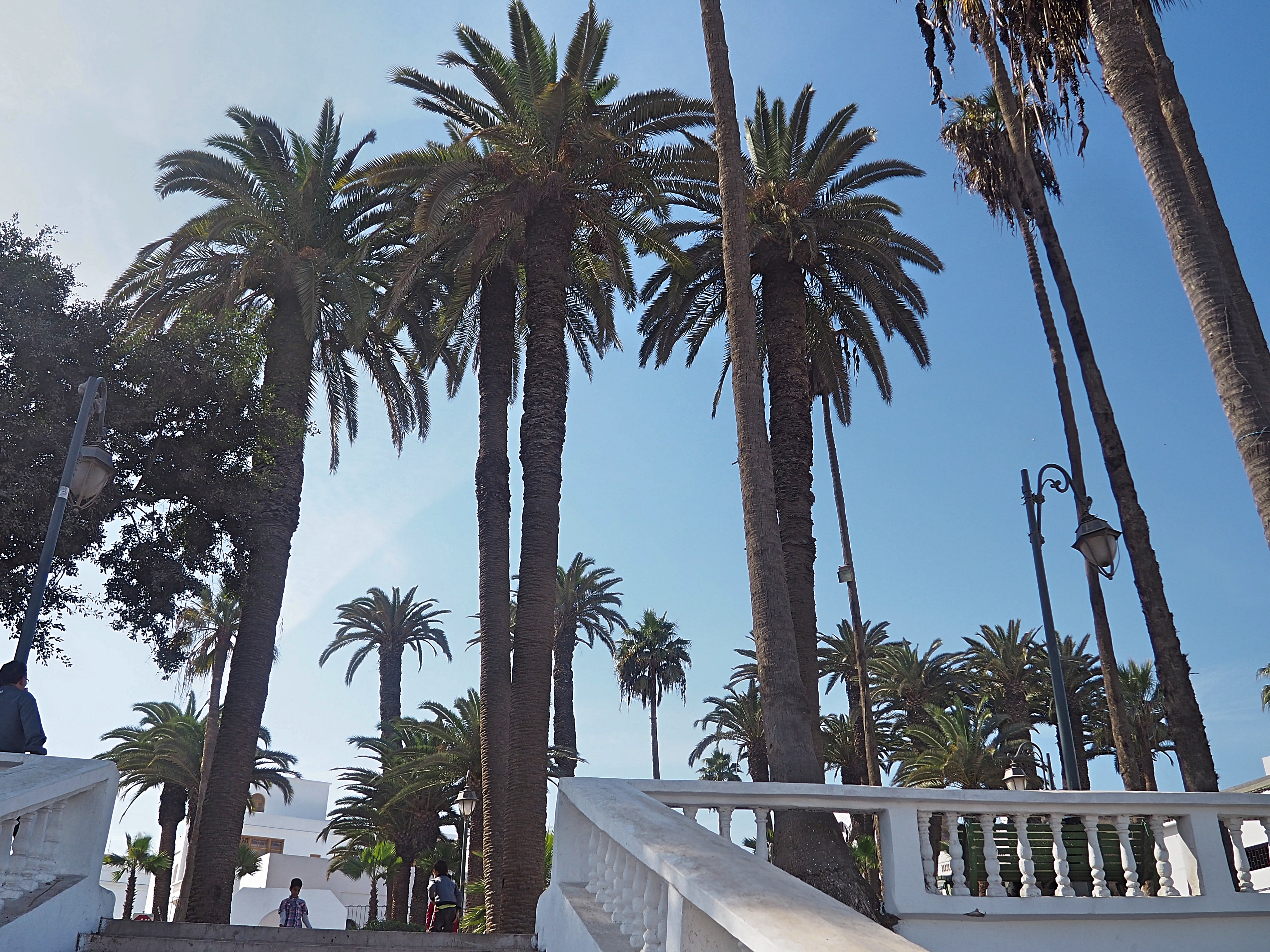
– Eat & Sleep –
All eateries mentioned above serve both lunch and dinner so can be enjoyed for both. Casa de Fish is also a perfect spot to just enjoy a mint-tea on a sunny peaceful rooftop. It might be wise to place a reservation beforehand if you plan on dining at Port de Pêche. For Rick’s Café, reservations are only needed for dinner.
When deciding on where to spend the night it makes sense to take into account what the rest of your plans for Morocco are. For me, location is always the first concern. As I arrived late in the evening by plane and left Casablanca by train I wanted my accommodation to be easily accessible to both and thought it to be less important if that meant that I had to take a petit taxi to the main sights. Right next to the railway station Casa Voyageurs stands a well outfitted Ibis Hotel. You can see its signs clearly when you leave the station enabling you to leave your bag at the hotel only to pick it up 5 minutes before your train leaves. The beds are great, the rooms clean and comfortable and it provides excellent value for money (650 MAD per night for a double, excl. breakfast). If your budget is more limited than that opt for Hotel Centrál (400 MAD). Its location is within walking distance from Casa Port, or about 7 minutes by petit taxi (for 15 MAD) provides good sized rooms with air-conditioning and sports a great rooftop terrace.
